In recent years, we’ve witnessed renewed momentum surrounding Contemporary Artists and spirituality in the art world. At museums, late artists who dove deeply into mysticism and religion are gaining posthumous attention. Perhaps the most famous example of this is Hilma af Klint, the 20th-century Swedish artist whose enthralling 2018–19 exhibition at the Guggenheim Museum became the most visited show in the institution’s history. More recently, Agnes Pelton, the mystical painter and member of the Transcendental Painting Group of Santa Fe, had a solo show at the Whitney Museum of American Art in 2020. Pelton’s show, which originally debuted at the Phoenix Art Museum, was the first solo exhibition of the artist’s work in more than 20 years. And this growing interest around otherworldly forces and faith systems is also palpable among artists working today.“
The resurgence of spirituality is more present than ever in contemporary art,” Iranian artist Parviz Tanavoli said in a recent interview. “Wars, conflicts, and consumerism seem to have prompted a desire for transcendence, for refuge, for essence. Increasingly, artists are aiming for the essence of spirituality in their work.” Undoubtedly—regardless of their personal religious beliefs—artists are turning to spiritual philosophies and theological iconography to examine their own beliefs and make sense of the current moment.
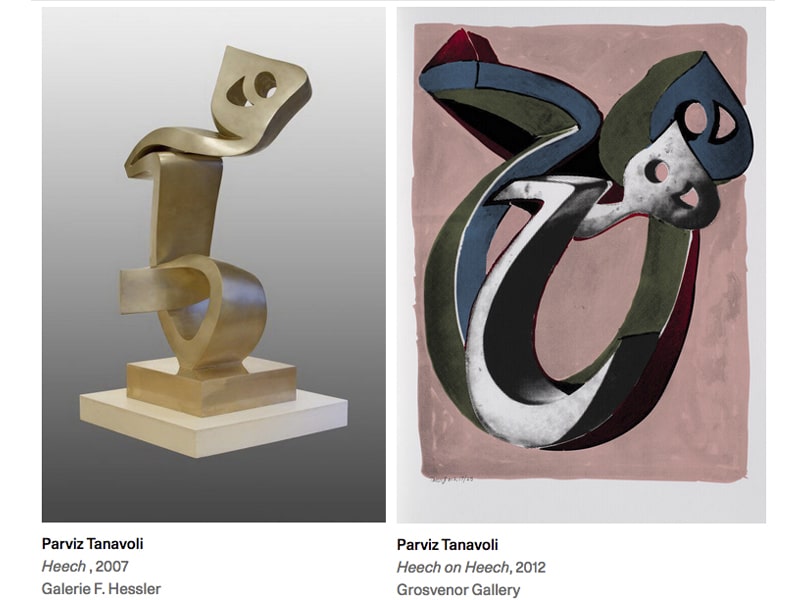
A member of the Iranian Saqqakhaneh artistic movement, Tanavoli is a renowned sculptor who has built a successful decades-long career that centers upon folk and spiritual iconography. He once believed spirituality was restricted to the domain of religion, “but as time went on and I witnessed the cruelty in various religions, I realized how wrong I was,” Tanavoli explained. “That is why I redirected my thinking and looked for spirituality in art, all the arts, including poetry, music, and performing arts.”
Tanavoli’s deep interest in this subject is reflected in his signature “Heech” series, a group of sculptures embodying the Farsi word heech, which translates to “nothing” or “nothingness.” Tanavoli first created these works in 1965 as a form of protest against the intellectual constraints and mercantilism he encountered in Iran’s elite art scene. He has described his “Heech” works as “living creatures” that depict “a nothingness that belongs to the realm of spirituality.” His work Blue Heech (2005) will be featured in the exhibition “Rebel, Jester, Mystic, Poet: Contemporary Persians—The Mohammed Afkhami Collection,” which opens at the Asia Society in New York this September.

The Austin, Texas–based Pakistani artist Nadia Waheed also turns to spiritual ideas and symbols to investigate profound subject matters, particularly themes of womanhood. Waheed’s work, which is currently on view in Andrea Festa Fine Art Gallery’s group show “She Came to Stay,” includes vivacious surrealistic paintings that take the viewer into alternate universes. In Sūnyatā, Kenosis (2020), Waheed depicts a woman in greyscale surrounded by a luminous nature-filled world. The piece explores themes of voidness, self-liberation, and spiritual evolution by drawing on śūnyatā, a concept from Buddhist philosophy referencing spiritual vacuity, and kenosis, which in Christian theology refers to Jesus’s “self-emptying” to welcome God’s divine intentions. In Nirvana (2019), a woman with emerald-green skin and henna-adorned hands wears a royal-blue veil that affords her a divine quality. The word aisha, meaning “she who lives,” is written in Arabic over the veil, while she’s positioned in front of an arch standing out like a halo behind her.
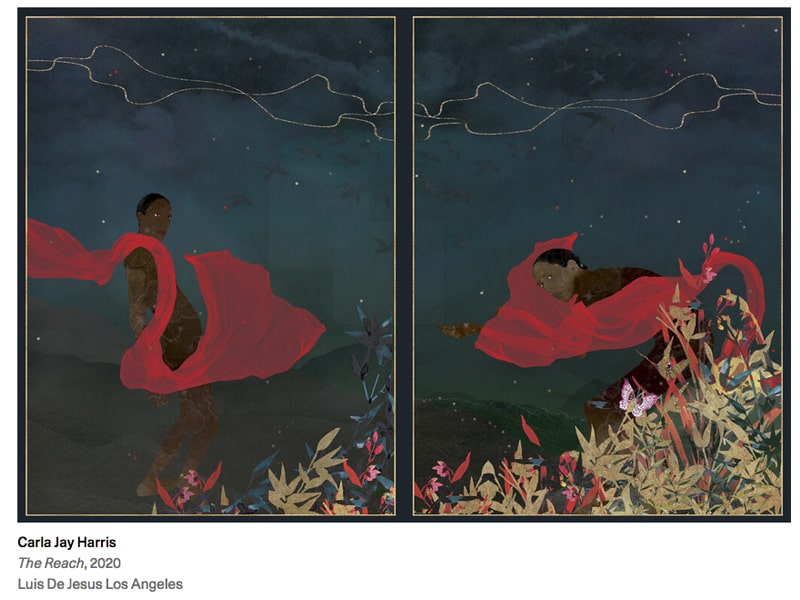
The halo is a motif that shows up repeatedly in the work of artists who are intrigued by the spiritual dimension. Tsoku Maela’s photograph Bardo (2017) is a captivating example that alludes to the Tibetan belief of an intermediate state after death. Featuring two people slightly bowing their heads, surrounded by patterned halos against a white backdrop, the piece is one of five in “Barongwa: I am that I am” (2016), a series inspired by the South African artist’s own spiritual experiences.
Multidisciplinary American artist Carla Jay Harris also began to incorporate mystical ideas into her work due to her personal experience. “In my larger art practice, I always start with something going on in my personal life,” Harris explained. “And after graduate school, I felt a bit sort of adrift. Looking at mythology and spirituality was my own way to ground myself. And that’s what really got me into it.”Carla Jay HarrisThe Reach, 2020Luis De Jesus Los AngelesContact for price“When I hear spirituality,” she continued, “I think about a connection to something larger than self, however you define that. God, a sense of the universe, a sense of nature.” The Los Angeles–based artist, who has a solo exhibition opening at Luis De Jesus Los Angeles in late August, has been adamant about returning to mythology as a way to delve into humanity’s sense of belonging and connection.
In her breathtaking series “Celestial Bodies” (2018–20)—works inspired by her experience as a “third culture kid” who grew up outside the United States—larger-than-life Black and Brown figures are depicted in mythological landscapes. In Eden’s Eye (2019), a person cloaked in red stares at the viewer while surrounded by golden leaves and a delicate, albeit radiant, halo. Speaking about her use of this increasingly popular motif, Harris noted that it was one of the last elements she incorporated into the piece, intending to add a sense of balance. Far from conceiving the halo as a strictly religious symbol, she uses the imagery to reference the sun. (Harris’s “Celestial Bodies” series will be featured at The Armory Show in New York with Luis De Jesus this September.)
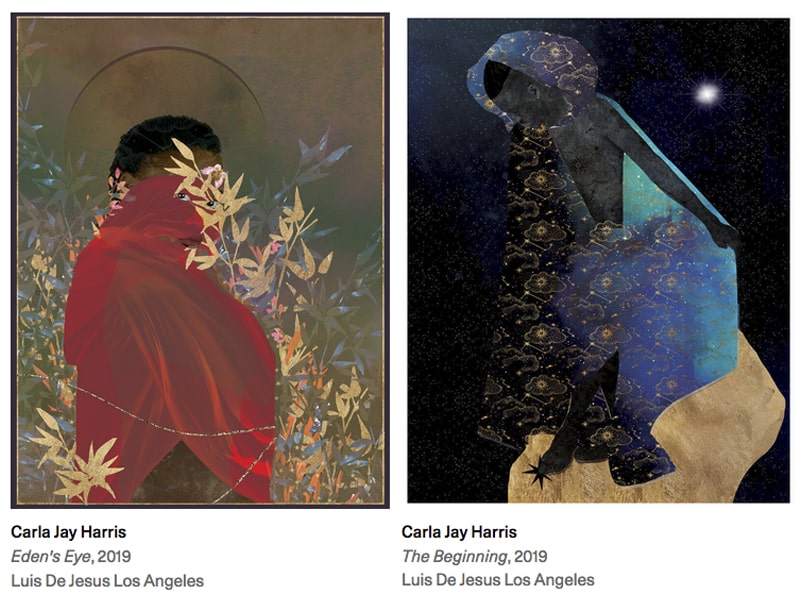
The feminist artist Ann Agee, known for her deft, hand-built ceramic sculptures, makes use of religious iconography without ascribing any sort of spiritual meaning to her work. “Spirituality is a word that puts me off a little bit,” Agee said. “It feels like there’s an implication to live the right way or the wrong way. And I dislike anything that tells you how to live.” One of Agee’s most recent series, “Madonnas of the Girl Child” (2020), was recently featured in a stunning show at P.P.O.W in New York. These ceramic sculptures—which vary delightfully in terms of size, form, and glaze—reenvision the divine Madonna and Child motif, depicting the child as a girl, starkly diverging from Christian tradition. Yet Agee doesn’t see the child in the pieces as divine. Instead, she turns to this canonical symbol and uses it as a vessel to reflect personal, secular narratives.
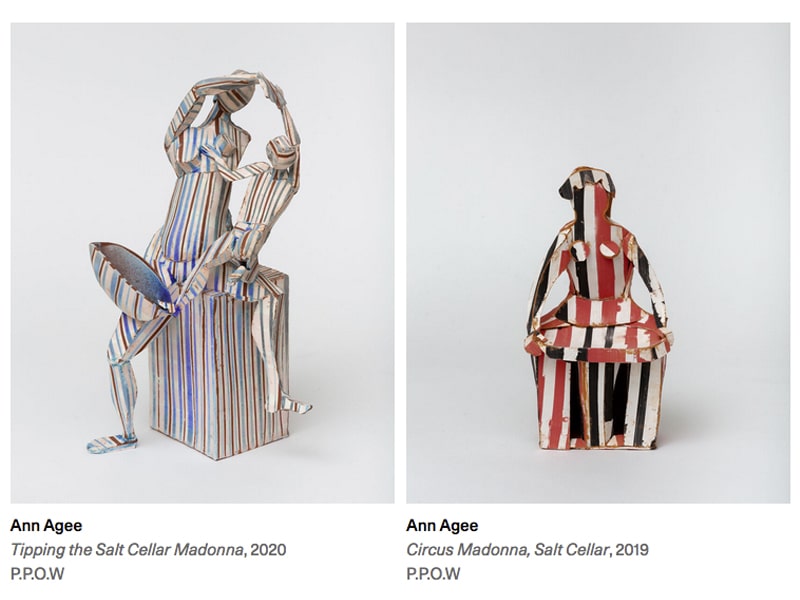
I think that us nonreligious people see the Madonna as a Yunginan or Freudian symbol,” Agee asserted. “There’s a psychological power to that image; whether you’re religious or not, you see the boy child as powerful, and we put our hopes and dreams in him. I would have wanted my parents to put their hopes and dreams in me as much as they did in my brother.” Yet “the pieces are double-portraits,” she added, “because there’s this other narrative, which is ‘I’m an artist and I’m a mother.’”Agee noted that the works were inspired, in part, by a set of Madonna-shaped salt cellars she encountered in the collection of the Davanzati Palace in Florence. She has always been drawn to functional artworks, she said, because it takes art into the secular.
Agee has also been a long-time devotee to religious aesthetics, though she carefully avoids dogma and instead focuses on technical elements like the use of color and light. In her words, “There was a time when artists could not survive if they didn’t make religious iconography, so a lot of really wonderful paintings were made with these stories.”
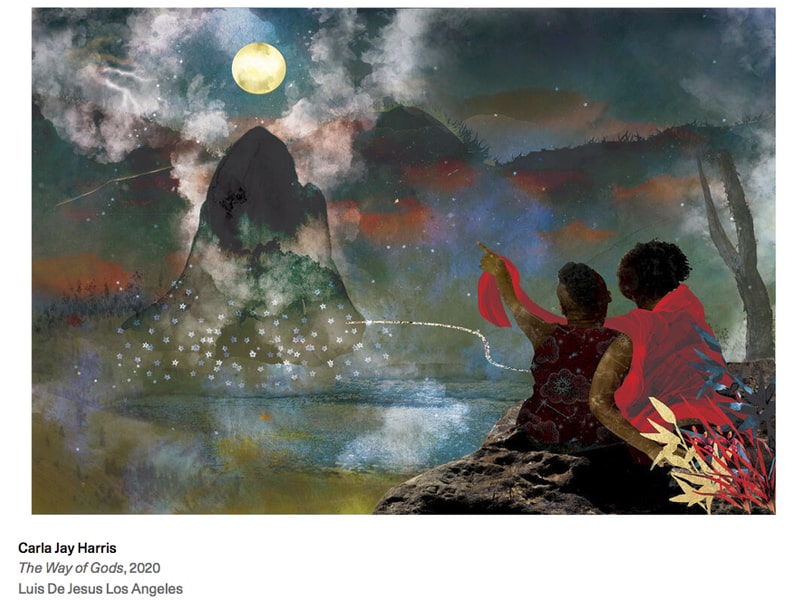
So while art history’s deep holdings of religious objects continue to influence contemporary artists, the presence of spirituality in art today feels very much tied to the present. “I just think we’re living in an anxious and chaotic world, and I feel like spirituality is a way to deal with that,” Harris said. “Perhaps many other people feel the same way.”
Although it’s nearly impossible to settle on one reason for today’s resurgence of spirituality in contemporary art, for numerous artists, it’s a matter of turning to their work to reflect on personal beliefs, religious or not. They may draw on theology to explore metaphysical themes or reinterpret religious iconography to discuss meaningful secular issues. Time will tell if the revival of these themes is merely a symptom of the present or a new path forward.
This article was originally written by Salomé Gómez-Upegui for Artsy

